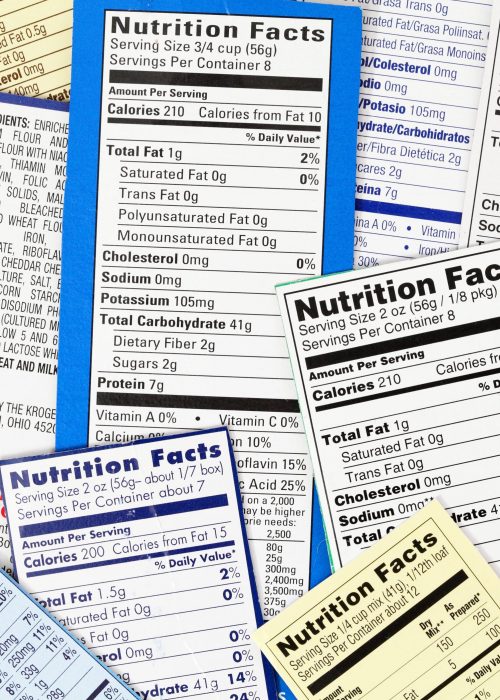Articles on Polyols
Learning to live a healthier lifestyle is easy when you change one small thing at a time. Learn and find tips to start the change today!
Learn moreMaltitol is a reduced calorie bulk sweetener with sugar-like taste and sweetness. Its stability, high sweetness, and structure make it suitable for a variety of reduced-calorie, reduced-fat and sugar-free foods. Maltitol does not promote tooth decay.
Maltitol is a member of a family of bulk sweeteners known as polyols or sugar alcohols. It has a pleasant sweet taste — remarkably similar to sucrose. Maltitol is about 90% as sweet as sugar, non-cariogenic, and significantly reduced in calories. Maltitol is especially useful in the production of sweets, including sugarless hard candies, chewing gum, chocolates,* baked goods and ice cream.
Maltitol is made by the hydrogenation of maltose which is obtained from starch. Like other polyols, it does not brown or caramelize as do sugars. Maltitol’s high sweetness allows it to be used without other sweeteners. It exhibits a negligible cooling effect in the mouth compared to most other polyols. Although maltitol is often used to replace sugars in the manufacture of sugar-free foods, it may also be used to replace fat as it gives a creamy texture to food.
*In this context, chocolate refers to chocolate flavored confectionary

Does not promote tooth decay: Maltitol, like other polyols, is resistant to metabolism by oral bacteria which break down sugars and starches to release acids that may lead to cavities or erode tooth enamel. Maltitol, therefore, is non-cariogenic. The usefulness of polyols, including maltitol, as alternatives to sugars and as part of a comprehensive program including proper dental hygiene has been recognized by the American Dental Association. The FDA has approved the use of a “does not promote tooth decay” health claim in labeling for sugar-free foods that contain maltitol or other polyols. It may be labeled as safe for teeth in other parts of the world.
Reduced Calorie Alternative to Sugar: Absorption of maltitol by the human body is slow, allowing part of the ingested maltitol to reach the large intestine where metabolism yields fewer calories. Therefore, unlike sugar which contributes four calories per gram, the caloric contribution of maltitol is only 2.1 calories per gram. The U.S. Food and Drug Administration has stated it does not object to the use of this value for maltitol in nutrition labeling of foods. For a product to qualify as “reduced calorie” in the United States, it must have at least a 25 percent reduction in calories. Maltitol is, therefore, useful in formulating “reduced calorie” products.
The lower caloric value of maltitol and other polyols is recognized in other countries as well. For example, the European Union has provided a Nutritional Labeling Directive stating that polyols, including maltitol, are assigned a caloric value of 2.4 calories per gram.
Useful in the Diets of People with Diabetes: Control of blood glucose, lipids and weight are the three major goals of diabetes management today. Maltitol is slowly absorbed. Therefore, when maltitol is used, the rise in blood glucose and the insulin response associated with the ingestion of glucose is significantly reduced. The reduced caloric value of maltitol (2.1 calories per gram versus 4.0 for sugar) is consistent with the objective of weight control. Products sweetened with maltitol in place of sugar may be useful in providing a wider variety of reduced-calorie and sugar-free choices to people with diabetes.
Recognizing that diabetes is complex and requirements for its management may vary between individuals, the usefulness of maltitol should be discussed between individuals and their health care providers. Foods sweetened with maltitol may contain other ingredients which also contribute calories and other nutrients. These must be considered in meal planning.
Useful in the Production of Sucrose Free/Reduced Calorie Chocolate: Before the development of maltitol, the production of “sucrose-free” or “no sugar added” chocolate proved difficult because of the lack of a polyol with the physical, chemical and organoleptic properties of sucrose. Maltitol’s anhydrous crystalline form, low hygroscopicity, high melting point and stability allow it to replace sucrose in high quality chocolate coatings, confectionery, bakery chocolate and ice cream.
The safety of maltitol as a food ingredient is substantiated by numerous studies in both humans and animals. The Joint Food and Agriculture Organization/World Health Organization Expert Committee on Food Additives (JECFA) has reviewed the safety data and concluded that maltitol is safe. JECFA has established an acceptable daily intake (ADI) for maltitol of “not specified,” meaning no limits are placed on its use. An ADI “not specified” is the safest category in which JECFA can place a food ingredient. Many countries which do not have their own agencies to review food additive safety adopt JECFA’s decisions.
The Scientific Committee for Food of the European Union (EU) published a comprehensive assessment of sweeteners in 1985, concluding that maltitol is acceptable for use, also without setting a limit on its use.
A petition to affirm the GRAS (Generally Recognized as Safe) status of maltitol has been accepted for filing by the U.S. Food and Drug Administration. This petition describes the use of maltitol as a flavoring agent, formulation aid, humectant, nutritive sweetener, processing aid, sequestrant, stabilizer and thickener, surface-finishing agent and texturizer. In particular, the petition addresses the use of maltitol at levels of up 99.5% in hard candy and cough drops, 99% in sugar substitutes, 85% in soft candies, 75% in chewing gum, 55% in non-standardized jams and jellies and 30% in cookies and sponge cake.
As with other polyols, maltitol may produce a laxative effect when consumed at very high levels. An information statement similar to the one required for other polyols is recommended in the GRAS petition for foreseeable consumption of greater than 100 grams per day of maltitol.
Maltitol is a versatile ingredient that allows food manufacturers to develop new foods that both taste good and are lower in calories, fat and/or sugar. Maltitol ’s qualities as a bulk sweetener make it optimal to blend with low-calorie sweeteners that are several hundred times sweeter than sucrose (but do not provide the necessary volume). Maltitol can also be used with other bulk sweeteners or polyols. Blending two or more polyols gives food manufacturers the flexibility to take advantage of each sweetener’s individual attributes. Maltitol offers food manufacturers the beneficial characteristics of mild sweetness, stability, solubility, bulk and reduced calories.
Polyols, often known as sugar alcohols, are not sugar and are not alcohol. They are low-digestible carbohydrates formed when hydrogen is added to their sugar source. For example, when hydrogen is added to glucose, you get sorbitol, a polyol found in many foods.

Learning to live a healthier lifestyle is easy when you change one small thing at a time. Learn and find tips to start the change today!
Learn moreWe’ve got the answers to your frequently asked questions about polyols.
Learn moreThese unique sweeteners taste like sugar but have special advantages.
Learn more